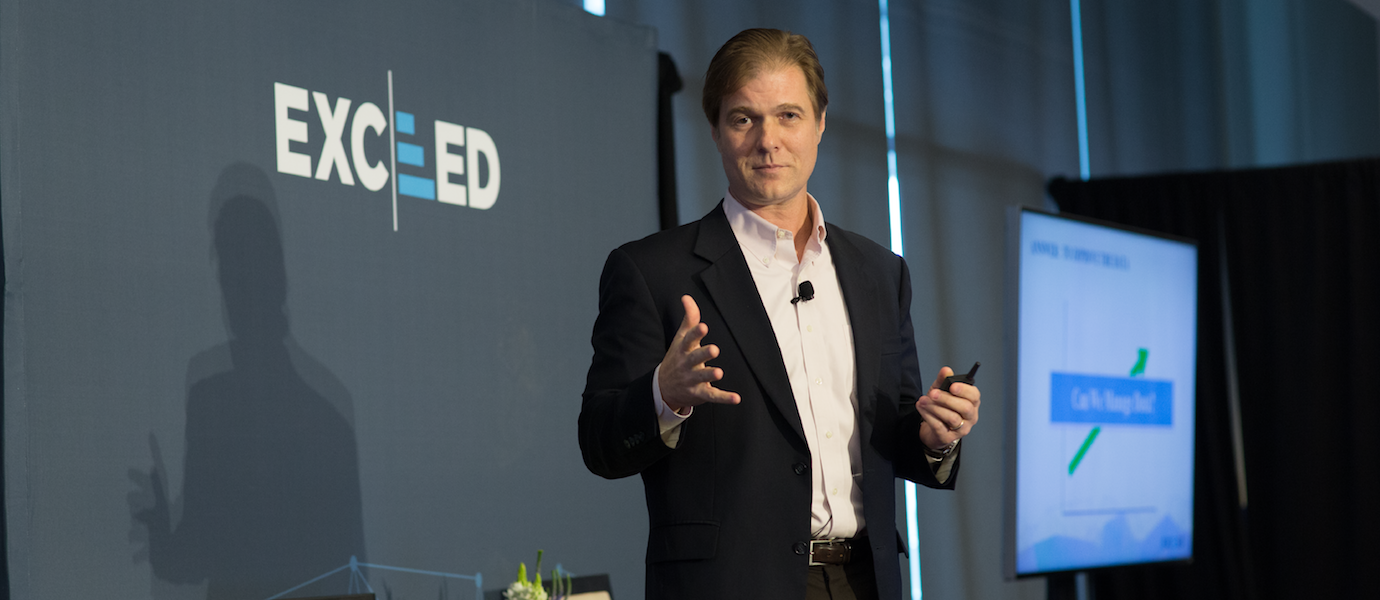Pipeline management and sales forecasting are often confused: they're closely related, but not the same. In our most recent webinar with Jason Jordan, partner at VantagePoint Performance and author of Cracking the Sales Management Code, we discussed the differences between the two and why that difference matters. In case you missed it, here are some of the highlights from our conversation.
Jason Jordan: What we would say emphatically is that if you can separate these two activities—and it's not easy—you'll do both of them better.
Pipeline management is focused on rep and pipeline performance, on pursuing deals, and developing rep capability. The critical distinction here is that pipeline management is about changing what we're doing today. A sales pipeline is a collection of your live opportunities: these are the deals you're actively pursuing. Pipeline management is about changing management and rep behaviors so those active deals become more likely to be won and less likely to be lost.
Sales forecasting is really about predicting tomorrow. I sometimes say that pipeline management is a heads-down activity, and sales forecasting is a heads-up activity with your eyes to the horizon.
Kurt Leafstrand: We've definitely seen this across our customers as well. Though the two activities are separate, it's very helpful if they're still integrated and connected. What you learn and discover in the pipeline management process—and the way you coach the rep accordingly—obviously informs the forecast. So while it's important to separate the two, it's also important to make sure they are integrated and, in a sense, communicating with each other.
JJ: You're right. When you have pipeline management meetings, in many ways, they're really forecasting meetings. You're getting the data for the forecast from the pipeline. It's tricky business to separate them, but it's important.
If you think your organization is pretty ineffective at the way you're managing your pipeline, our research shows that there's a big opportunity there for you to improve your performance. You're going to win or lose these deals based on whatever your sales team does tomorrow and the day after that. The real question, then, from a management perspective, is what do we do differently.
These three practices had the greatest impact on sales revenue growth:
Top Pipeline Management Practices
- Having a clearly defined sales process led to better team performance.
- Sales managers that spent more than 3 hours per month per rep on the sales pipeline really saw a difference. If you spend a lot of time on your sales pipeline, chances are that you're getting past scrubbing data and the system and starting to have real conversations about deals.
- Managers trained on pipeline management performed better than those who had not been trained. They were also trained during those 3, 4, 5 hours a month where they're sitting down and discussing pipeline with reps.
KL: The next big question is, "OK, so how do you actually do this?" The things that Jason has mentioned and the stuff you're trying to measure probably live in a few different places. When you look at the size of the pipeline and what's going on with those deals, it's critical to have a single place where you can go to assess the real health of the pipeline. Everyone from the rep to senior management needs to see the same thing and the same metrics, whether those might be opportunity size or deal mix, and how that will get you to a given revenue target.
JJ: Sales forecasting is a bit different from pipeline management. If you're managing your pipeline better, you are winning more deals; that's the reality of it. Forecasting is kind of an iterative thing that feeds itself. You start the year with a sales forecast. As you go through the year, it starts to tighten up more and more. Hopefully by the end you're adjusting your behavior or your sales forecast along the way so you do get to the target. It's not quite as direct that better forecasting leads to higher revenue growth, but it is quite clear that if you're better at forecasting, you're better at hitting your goal.
When we looked at the sales forecasting processes that actually led to accuracy, here were our top three:
Top Sales Forecasting Practices
- Successful teams had a sales forecasting process that was technology-enabled. This is an incredibly analytical activity; you're trying to gather volumes of data and manipulate it, then apply percentages and close dates. If you're relying on paper or Excel, it's almost impossible to see how to do this at a large organization.
- Training sales management on sales forecasting has a significant impact on accuracy.
- Holding sales managers and reps accountable to their forecasts brought better results.
If you take these together—if the technology is there, managers know how to manage the process, and managers and reps are held accountable—it's easy to see how the result is a more accurate sales forecast.
KL: For all of these reasons it's so important to think of sales forecasting not as an ivory tower process that's disconnected from the field, but as something that's fully integrated. Coaching, deal inspection, and that critical time between the rep and the manager do live on their own, but it's that deal-level inspection that drives the forecast and is critical to hitting your business goals.
Beyond just the number you're calling, it's important to understand which deals are at risk. Evaluating risk shows you which deals to focus on and how to direct reps and managers to those deals. It also helps you see if there's anything you can pull in, in addition to calling your number. Which deals are ready? Which have high potential?
Finally, you need to consider your mix of deals, including different products, renewals, and churn levels. If you want to run a successful sales forecast, you need to be able to see and forecast on all of the different dimensions of your business.
Key Takeaways for Sales Forecasting & Pipeline Management
- Pipeline management is about changing today's activities, whereas sales forecasting focuses on predicting the results of tomorrow.
- Emphasize strategic coaching instead of cookie-cutter repetitive training: Each rep is the CEO of his own patch, and they're responsible for managing the opportunity-to-close process. Your job as a manager, as an exec, is to go in there and help them optimize that process. That's all about pipeline health.
- Use historical data to gauge future success. What CRM has brought us in the last two decades is the ability to gather and report data but also the ability to collect data and keep it. We really don't do a good enough job of analyzing and using past data.
- Exercise rigor and focus. Focus on the activities you want to succeed. Define the sales pipeline expectations for what sales managers and reps will talk about. Keep to that rigorous structure, and results will follow.


